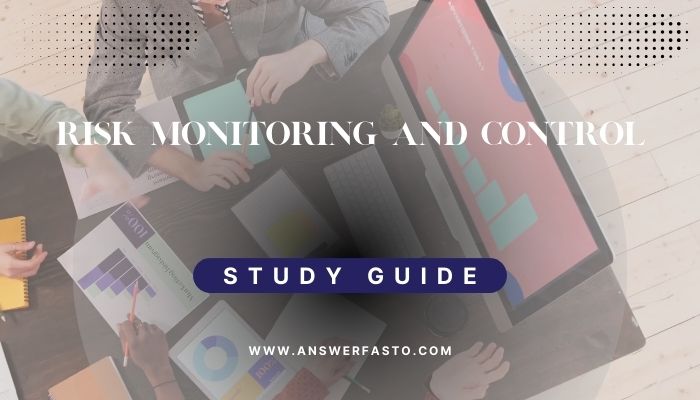Well, it can be referred to as part of risk monitoring and control in projects. The fundamental point in that dimension is ensuring that risks are identified, analized, and managed to effectively safeguard project objectives. Below is an exhaustive discussion of the whole process with appropriate examples.
1.Risk Monitoring
The risk identification stage is the initial stage of most annual risk management activities. The continuation of the identification process throughout the project is necessary. It involves determining internal or external risks affecting the project.
Example: For a construction project, an internal risk can be a labor shortage that is highly skilled, while a risk external to the effect could include bad weather conditions.
2. Risk Assessment
Once the risk is identified, the next step is to evaluate the risk in terms of potential negative effects expected when the risk occurs as well as the likelihood or probability of the risk occurring. As a result, one knows which risk or risks would need immediate attention.
Example: In a software development project, the project manager assesses the risk of compatibility with different operating systems and assigns a probability and impact rating.
3. Risk Registration
All acquired risks should be hosted in the risk register, giving descriptions, possible consequences, probability analyses, risk owners, and so forth.
Example: For a pharmaceutical research project, a risk register could indicate possible delays due to regulatory approval and how they will affect the timing along with responsible employee names.
Risk Management
1. Risk Response Planning
A plan or strategy to address the high-priority risks in an organization may include one or more of the following:
- Avoidance: Elimination of the possible event.
- Mitigation: Reducing the possibility or reducing its impact.
- Transfer: Shifting the risk to another legal entity.
- Acceptance: Risk is accepted with no further specific action.
For instance, during a product development project, supply chain disruption is mitigated by ensuring that at least two suppliers are available to avoid single sourcing.
2. Risk Implementation
Implement planned response actions and ensure monitoring of effectiveness for the achievement of intended outcomes.
Example: In software development, risk mitigation measures against bugs include strict code reviews and testing through automation.
3. Risk Monitoring
Monitor risks continuously, and update their status and probability and impacts in the risk register. Change plans as necessary when risks become issues.
Example: A project manager in a construction project monitors and tracks adverse weather conditions through forecasts and changes the schedule accordingly.
4. Issue Identification
The difference is made between risks (uncertainties in the future) and issues (risks that have occurred). Immediately address the issues to minimize disruption.
In the project campaign, when there is one of the issues that concerns the resignation of a key member, the project manager reallocates resources or sources new temporary help in order to make sure the project moves on fast.
5. Lessons Learned
Document effective risk response actions and situations in which related risks occurred, drawing lessons from them to improve future risk management practices.
In one case in a research project, the team would assess the experimental failure risks management. The conclusion would be that adopting a better testing protocol could have mitigated those risks.
Conclusion
Effective risk monitoring and control are important to reducing the negative impacts of uncertainties. Early identification of risks, planning and implementing response strategies, and learning lessons from experience would enhance a project manager’s performance in ensuring the ultimate success of the project without veering off course from the objectives.



